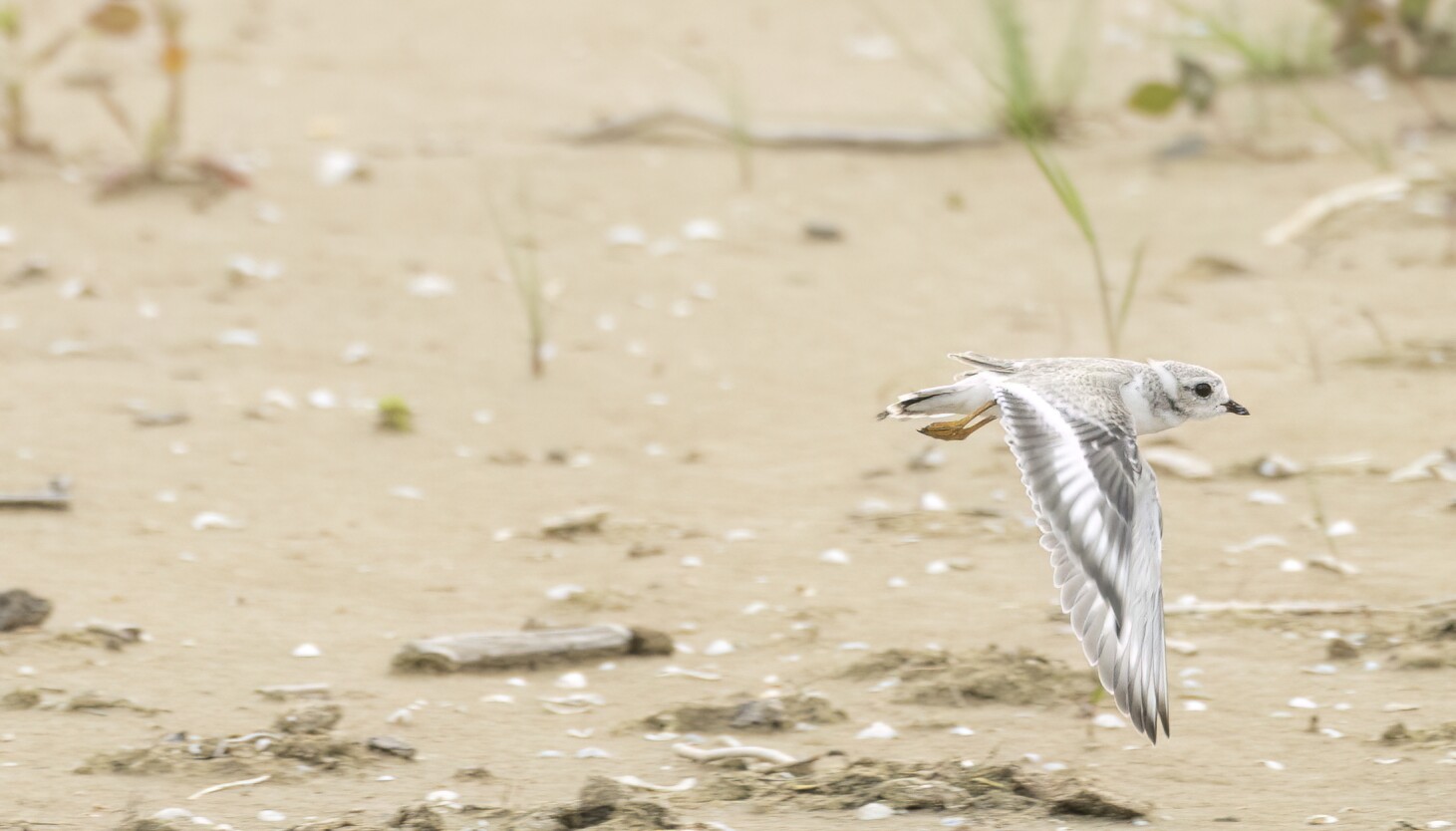They grow up so fast, don’t they?
Nagamo, the lone surviving piping plover chick at Montrose Beach, headed south for the winter Thursday, according to the Chicago Piping Plovers, a volunteer group dedicated to protecting the birds.
Its parents Imani and Searocket flew south days ago, leaving Nagamo, whose sex is still unknown, to survive on its own while it learned to fly and spent nights alone lullabied by the lapping waters of Lake Michigan.
Not much bigger than a tennis ball, the chick spent its final days on the beach scampering around the sand dunes, hiding from dangers, pecking at insects and learning how to master the air. It was building the strength to make the same odyssey as its parents.
“It spent time just eating and getting ready to go south for the winter,” said Nicole Finch-Mason, Hope B. McCormick Curator of Birds at Lincoln Park Zoo. The crash-course in survival is typical for shorebirds, which develop faster than other birds, she said. “They grow up really fast.”
The chick, given the name Nagamo, was the only piping plover chick who survived out of a full clutch of eggs spawned at Montrose Beach by Imani and Sea Rocket in June. The brood kicked off a promising start to the breeding season of the beloved species, which has been endangered since 1984. The cause of death for the three chicks that didn’t make it hasn’t been determined.
Known for their melodious pip-lo song, piping plovers are white and pale sand-colored with a distinctive black band around the neck. They grow to around 7 inches long with a wingspan of 15 inches. Their average life span is about five to six years although some have been documented to live as long as 11 years, according to the U.S. Fish and Wildlife Service.
Finch-Mason said the plovers’ size and brief life span are some reasons why they develop faster than other birds. They are known as precocial birds, which are capable of moving around on their own and can even find their own food not long after hatching.
That differs from altricial birds, like hummingbirds and woodpeckers, which remain in the nest and are more dependent on their parents for feeding.
“Basically as soon as this chick would hatch out it would be walking within hours and within a day or two it would be eating insects,” she said, adding that the chick’s ability to provide for itself early is why its parents fly south before the chick.
“Being able to eat and walk and thrive right away in a really unpredictable kind of climate and system is really important for their longevity,” Finch-Mason said. “And so a lot of shorebirds generally are going to follow in the same suit and grow up very quickly.”
But that doesn’t mean the chick didn’t need its parents. During their time together the chick picked up skills it will rely on during its trek to wintering grounds thousands of miles away on the Gulf coast.
“Generally it kind of watches what the parents do and based off those observations it starts doing that themselves,” Finch-Mason said.
While experts aren’t entirely sure what guides migrating birds to their usual wintering grounds, Finch-Mason said its known that they use information from the sun, stars and the Earth’s magnetic field to get to their destination.
Searocket left Montrose Beach for the winter in mid-July, while Imani was last seen on the beach on Aug. 2, according to the Chicago Piping Plovers. Tamima Itani, the lead volunteer coordinator for the group, said they’ve observed Imani appear to encourage Nagamo to spread its wings when the family was still together.
“We’re all definitely rooting for it to continue thriving and the population of the Great Lakes piping plovers is so small in general that every single chick is very important to the population,” Itami said.
Imani was hatched at Montrose Beach in 2021, an offspring of the piping plovers Monty and Rose. Searocket, a captive-reared chick, was released at Montrose Beach in July of last year. The species disappeared from Illinois beaches around 1955 and weren’t seen again until chicks hatched in 2019, according to the Chicago Park District.
Matt Igleski, executive director of the Chicago Bird Alliance, which also helps monitor the plovers, said seeing chicks leave for the first time brings a little relief and a lot of hope.
“It’s fingers crossed because you’re hoping that they make it to wherever they’re going,” he said. “You’re hoping for them to come back next year and hope that you get to do it again,” he said.
The idea of Nagamo starting his own family at Montrose next year isn’t far-fetched, according to Finch-Mason.
“In most cases, they’ll end up in a similar geographic range as where they were hatched so hopefully this offspring will end up coming back this way next year,” she said. “It’s very possible that this fledgling could come back and have its own nest next year, which is really exciting.”



